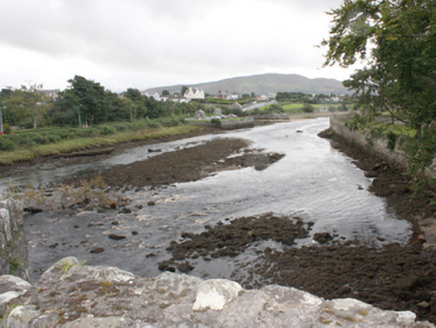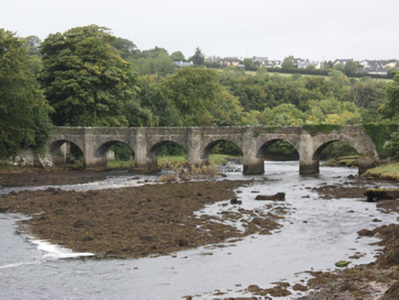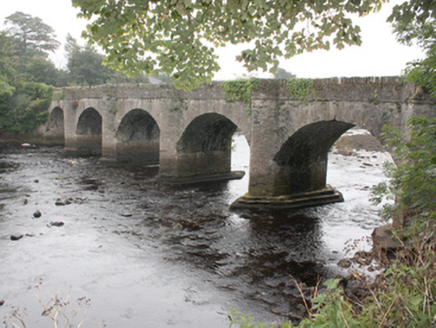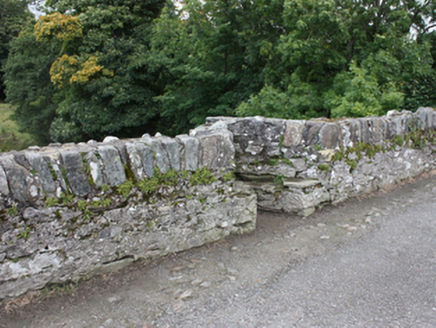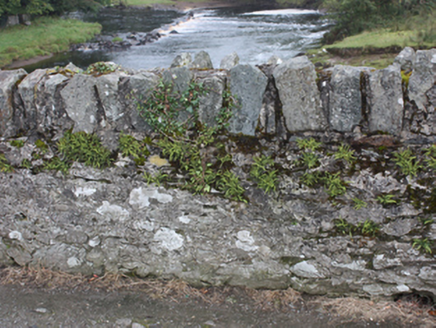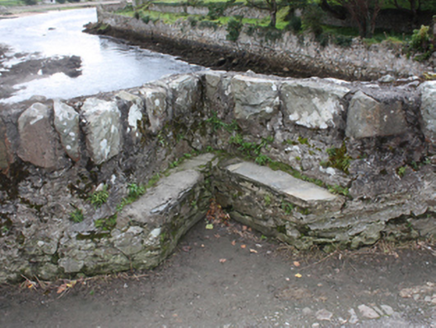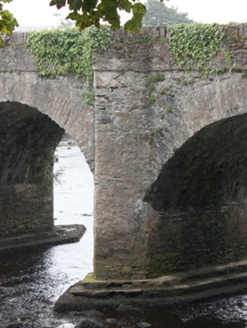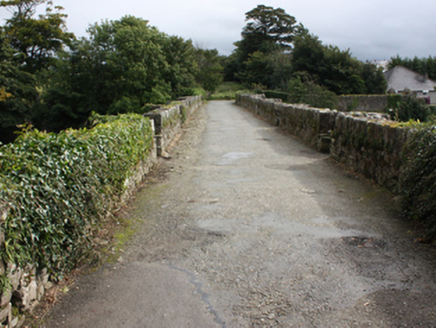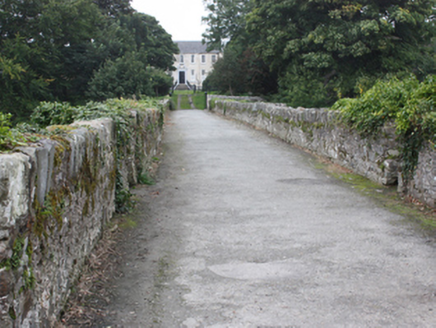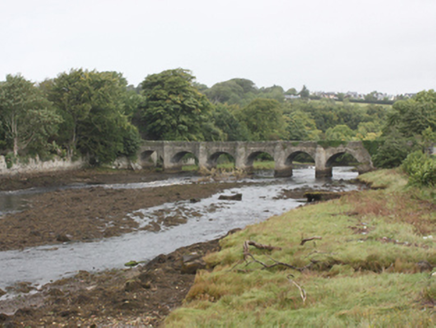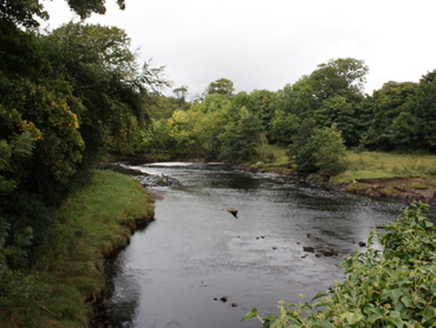Survey Data
Reg No
40815003
Rating
Regional
Categories of Special Interest
Architectural, Technical
Original Use
Bridge
In Use As
Bridge
Date
1710 - 1730
Coordinates
234352, 432618
Date Recorded
11/09/2008
Date Updated
--/--/--
Description
Six-arch bridge, carrying approach avenue to Buncrana Castle (see 40815001) over the Crana River, erected c. 1716-18, having V-profile roughcast rendered rubble stone cutwaters to piers to both the upstream (north) and downstream elevations (south) rising to form pedestrian refugees at road deck level. Round-headed arches having roughly squared rubble stone voussoirs; rubble stone construction to arch barrels. Roughcast rendered rubble stone construction to piers, spandrels, and to parapets. Projecting stone stringcourse to side elevations at road deck level. Pedestrian refuges incorporate stone seating. Single carriageway with tarmacadam deck, exposed cobble stones in sections. Bridge spans the river Crana at the entrance to Lough Swilly Estuary giving access to Buncrana Castle to west. Located to the north-west of Buncrana town centre.
Appraisal
This impressive and elegant multiple-arch early eighteenth-century bridge, known as "Castle Bridge", retains its early form and character, and is a feature of some aesthetic appeal at the entrance to Buncrana Castle (see 40815001). It is aligned along an axis with the doorway of the castle and the former main entrance gateway to the east (see 40815005), and was originally built by Sir George Vaughan in conjunction with the castle to carry the long straight approach avenue over the Crana River and into the forecourt of the demesne. The narrow plan and the full-height cutwaters rising to pedestrian refuges at parapet level are features of many bridges of its date in Ireland. The cut stone seating to the refuges and the stringcourse at road deck level are interesting features that indicate an attention to detail on behalf of the builders. It is robustly-constructed in local rubble stone masonry, and its continued survival and use stands as testament to the quality of its original construction. It originally had a cobbled surface, which is still evident in places. Its impressive stature and attractive form make it an important part of the area’s architectural heritage, as well as an excellent example of a bridge of its date. It forms part of an important group of structures associated with Buncrana Castle (see 40815001), and is an integral element of the built heritage of the local area in its own right.
